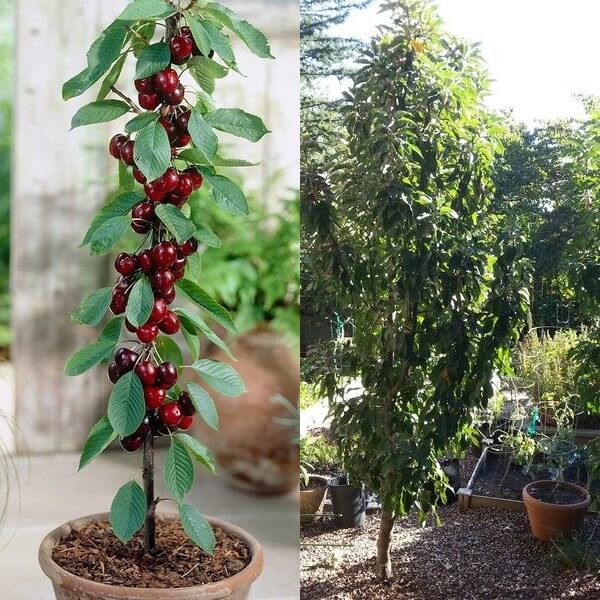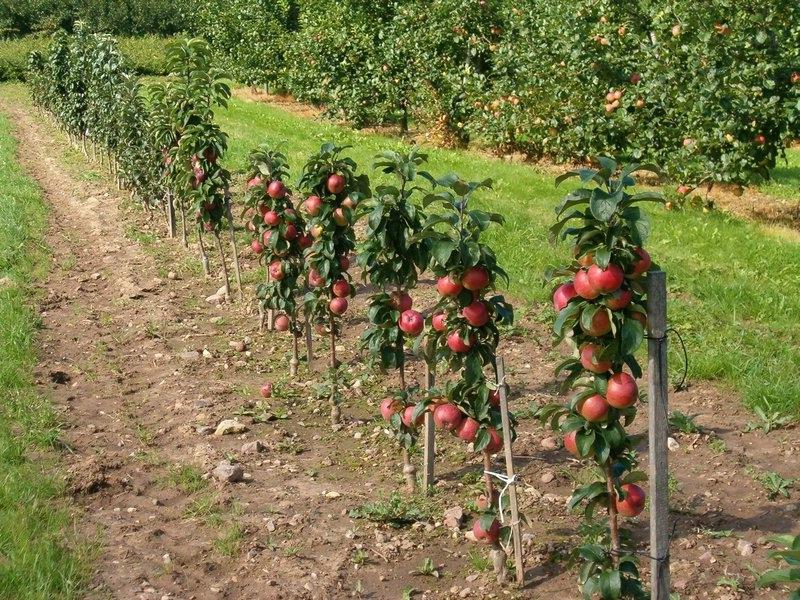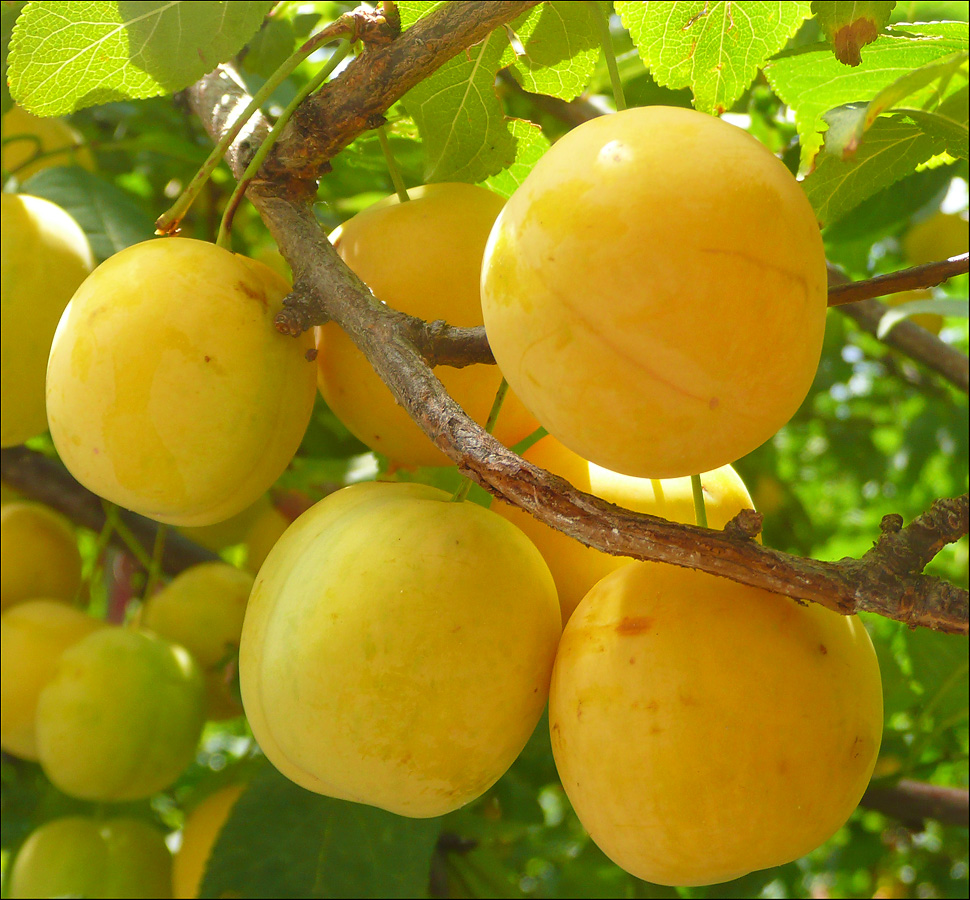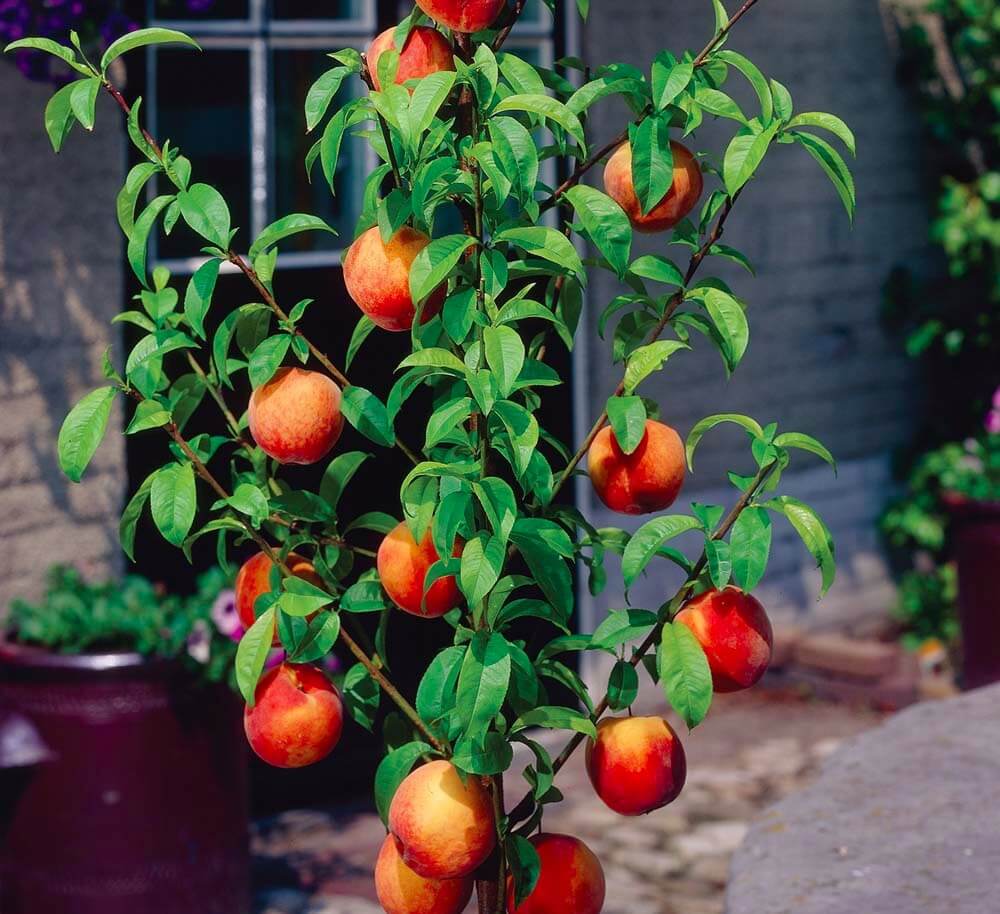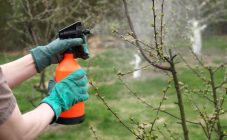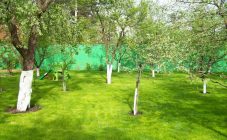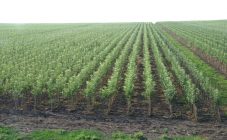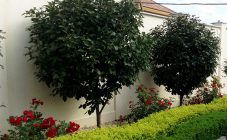Content:
The columnar forms of fruit trees differ from the usual horticultural crops by their unusual crown. It does not have long horizontal branches, instead of which 1-3 vertical main branches are formed, densely covered with fruits. The first apple variety of this type is called Vazhak and was obtained in Canada in the 60s. last century. In the future, the purposeful work of breeders has made it possible to obtain many modern varieties of dwarf trees.
Columnar fruit tree varieties
Columnar has several important advantages over a traditional garden:
- Earlier start of fruiting: 2-3 years after planting (for the rest, 5-6 years).
- The yield of the garden is higher.
- The compact crown is easy to care for and easy to harvest.
- There are up to 400 trees per 1 hectare of row planting, while columnar trees can be grown up to 2000.
Among the shortcomings, it is customary to mention the high cost of seedlings. It is difficult to find inexpensive among the varieties. In addition, the gardens have to be rejuvenated regularly.
The whole variety of dwarf varieties can be divided into two categories:
- Trees grown from seeds. Their genome contains a special gene for short stature.
- Grafted seedlings. The grafting is carried out on a related variety: Currency, Arbat, 003.
From the central trunk of the columnar tree, short branches depart at an acute angle, on which flowers appear in spring and an ovary is formed. The internodes of the branches are very short. Early fruiting of columnar and high yield has a price: after 10-12 years, the old fruit tree will have to be replaced with a new one.
The choice of columnar fruit varieties is quite large: apple trees, pears, apricots, plums, cherries, peaches. The latest developments of leading breeding stations appear regularly, possessing the properties of resistance to pest and disease. A lot of work is being done on the zoning of varieties, because the first of them did not have high winter hardiness.
How to Plant, Care and Prune Columnar Fruit Trees
In order to get a crop as soon as possible and not to lose the plantation of columnar seedlings due to mistakes in care, general recommendations should be followed, which can be attributed to all dwarf trees.
Landing
Experienced gardeners believe that planting young trees of columnar varieties is best in the first decade of September. This will allow them to take root and overwinter, so that next year they will actively move into growth. Can be planted in spring, if the circumstances are so.
The optimal soil composition is loamy or sandy loam. Since the root system of this type of tree is rather weak, especially in young seedlings, everyone will need support. When planting rows, it is recommended to install a common long support - a trellis or a fence.
Planting scheme: 0.8-1 mx 1.2-1.5 m. The distance of 1.5 m between the rows is sufficient for processing row spacings both manually and mechanically. A hole is dug 0.5 m deep. A bucket of water is poured onto its bottom.The excavated soil is mixed with two shovels of compost or rotted manure, add a tablespoon of phosphate and potash fertilizers. A seedling is lowered into the hole so that its roots are neatly spread. Then sprinkle with earth with fertilizers. Pour the bucket of water again. The trunk is tied to a support.
Care
In the first year after planting in spring, pinch all the flowers on the trees. This is done so that the plant does not spray its forces, but directs them to active growth and rooting. In the second or third year, the ovary is also monitored very closely. The fact is that all columnar varieties bloom very profusely and form bunches of fruits of 5-7 pieces on their short branches. It is advisable to thin them out, leaving only 2. This will give the remaining fruits to really ripen. Otherwise, the young tree will be depleted and its fruits will be small and of poor quality.
The root system of columnar trees is located close to the soil surface. Therefore, they suffer from powerful weeds. To prevent this, you can choose any of the strategies:
- Weed the garden regularly by hand, as the use of hoes and mechanized cultivators is contraindicated.
- Tinning - purposeful sowing of loose soil around trees with low-growing cereal grasses, which enrich the soil with valuable nutrients, and also prevent intensive evaporation of moisture.
- Mulching - sprinkling the soil with shavings, sunflower or peanut husks, chopped grass, etc. The recommended thickness of the backfill layer is 3-5 cm.
As a pest control, not only treatments with insecticides and fungicides, but also the device of trapping belts around the trunks and hanging traps have proven themselves well. The sticky substance will prevent ants from bringing aphids onto the leaves, and the traps on the branches, which are containers filled with a mixture of sweet compote and sunflower oil, will become the place of death for many flying pests.
Young plants need moisture, but it is important not to overdo it with watering. The recommended frequency is once a month. In this case, you can use drip irrigation systems. In the first year, fertilizers are not used, and in subsequent years, irrigation water is mixed with organic fertilizers once a month.
Pruning
Although lateral branches are not typical for the speckled variety, they may appear from time to time. Freezing of the apical kidney can provoke this process. If this really happened, then all the side branches are removed, except for one, which will replace the trunk in the future. In other cases, the side branches are completely removed.
Places of cuts should not be left just like that, they will certainly be coated with garden varnish, since various pests and diseases can easily penetrate the wood through the damaged area. Pruning performs not only a formative, but also a rejuvenating function. In the spring, all the shoots weakened and frozen during the winter are cut out. Without waiting for the lateral shoots formed in summer to gain strength, they are carefully pinched. In the fall, the main trunk is slightly shortened, and the crown that is too thickened is thinned out.
Columnar fruit trees for Siberia, Moscow region and Rostov region
Considering how seriously the climatic conditions differ in different regions of our country, breeders purposefully create columnar varieties of fruit trees with varying degrees of winter hardiness.
Columnar fruit trees in Siberia have proven themselves well:
- Iksha - apple tree with large (up to 200 g) green fruits, characterized by high productivity and keeping quality;
- Moscow necklace - an apple tree with round burgundy apples weighing up to 200 g, is distinguished not only by frost resistance, but also disease resistance;
- Sayan - an apricot with a yield of 17-45 kg, yields yellow-green fruits, endures frosty snowy winters;
- Northern Lights - an apricot with a yield of 13-47 kg with bright red fruits, characterized by medium frost resistance;
- Mirabella - a plum with pink fruits (up to 40 g), ripening in August, is resistant to disease and differs in that it does not crumble for a long time.
In the Moscow region they plant:
- Renet Mazherova - winter-hardy apple tree, autumn ripening, with bright yellow apples weighing up to 50 g;
- Medoc - apple tree, fruiting with bright yellow apples with thick peel and strong sweet aroma, weighing up to 140 g;
- Star - a self-pollinated apricot giving large fruits (up to 60 g), the description promises up to 10 kg of yield from each tree;
- Prince Mart is a large-fruited (up to 60 g) apricot that can withstand frosts down to -30 ° C, therefore it is suitable for almost all regions;
- Blue Sweet is a plum with very sweet dark purple fruits weighing up to 75 g, with a yield of up to 15 kg per tree.
Columnar fruit trees for the Rostov region:
- Bolero - an apple tree of autumn ripening with green apples with a scarlet blush weighing up to 200 g;
- Snow White is an apple tree with light green apples weighing up to 130 g, ripening in October and featuring excellent keeping quality;
- Gold - an apricot with very smooth fruits, ripening at the end of July, one columnar tree gives up to 10 kg of fruit;
- Golden triumph - a peach up to 1.5 m high and giving up to 7 kg of fruits weighing 250 g each.
Tips & Tricks
By giving preference to dwarf trees, you can afford to plant many more varieties and varieties on the site, since the planting density is much higher. At the same time, nothing prevents you from arranging a two-tier garden, surrounding fruit trees with various shrubs: currants, raspberries, gooseberries and others.
If a garden is created in Siberia, in the Urals, then even when choosing the most winter-hardy varieties, it is recommended to create shelters for trees.
There are several options for sheltering columnar fruit trees:
- Cover the crown with agrofibre. The canvases can be reused the next year, and it is best to attach to the trunk with ordinary twine.
- Use protective cones. Such a cone is a wooden frame made of strips on which agrofibre is stretched. In the spring, the cones are stacked until autumn.
It is worth recognizing that interest in columnar fruit trees is growing steadily. Gardeners are not deterred by high prices for seedlings, which can go up to 1000 rubles. per piece and even higher. Excellent taste and marketability of fruits will pay off the investment in a few years. In addition, many columnar fruit varieties can be propagated on their own using the branches of the grown mother plant for grafting.
